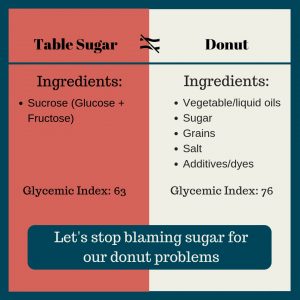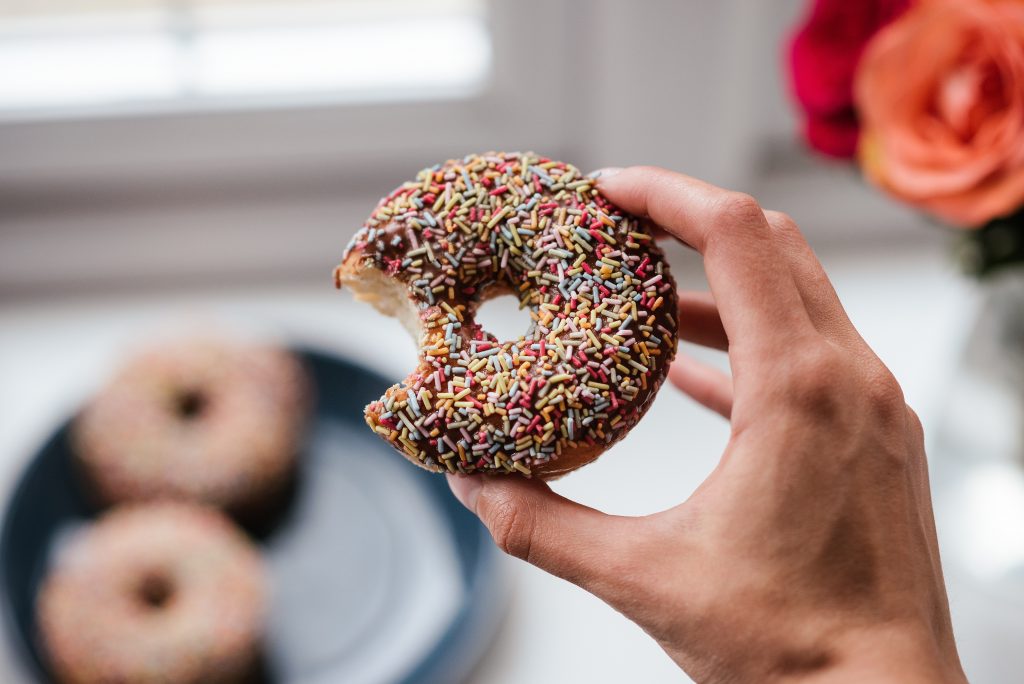It’s really important to define exactly what we’re talking about when we discuss culprits in the diet world. That’s why I created this quick info-graphic to explain that sugar and donuts (or cake or cookies) are not one in the same.
Note: The glycemic index is a scale that tells us how slowly or quickly a food increases our blood glucose levels after we eat it.

Table Sugar
Table sugar is one ingredient: sucrose, which breaks down into glucose and fructose in the body. Glucose is used to make energy on a cellular level. It also tells the pancreas to release a hormone called insulin, which is a messenger that helps our cells take up sugar from the blood. The liver deals with the fructose by converting it into glucose and storing it. Fructose does not stimulate insulin and or depend on it to get into our cells.
The Donut
A donut on the other hand has multiple ingredients. Vegetable or liquid oils that are unsaturated are one of the worst culprits when it comes to disease. These oils become easily damaged and create free radicals. Free radicals are responsible for creating inflammation in the body. A donut also contains grains, which are long chains of one sugar: glucose. This is why the glycemic index for a donut is higher than the glycemic index of pure table sugar. Glucose spikes our blood sugar faster than fructose. The other problem with grains is that they are hard to digest. Many people have an intolerance to grains, specifically wheat, without realizing it.
This is why it makes complete sense for someone to feel better when they cut out these foods. A huge part of it is the reduction in inflammatory unsaturated fats and grains that are difficult to digest. Sugar in itself is not the problem. If someone’s response to their cravings for sweet foods was to eat pure table sugar, they would quickly develop an aversion to it and probably find they no longer crave sweet foods. On a biological level, in my professional and personal opinion, it does not make sense that the body would begin to have an altered neurological response to something that is so essential to its survival.
How to Address Sugar Cravings
Sugar cravings result from an underlying problem with stress, which increases our needs for fuel. Because fuel for our body is sugar, our body sends signals for us to eat more sweet foods. The first step to addressing these cravings is to address stress. My blog post on Why Blood Sugar Regulation is Key to Stress Resiliency talks extensively about stress and how regulating blood sugar can improve our body’s ability to deal with stress.
Latest posts by Nosheen (see all)
- Understand PCOS Sugar Cravings & How to Stop Them - March 24, 2023
- The 4 Types of PCOS – What You Need to Know - February 24, 2023
- 4 Reasons Not to Keto with Hypothyroidism - January 27, 2023

